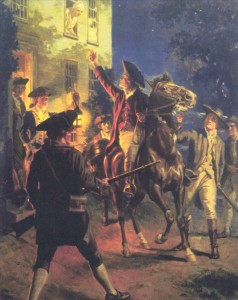This is my maiden post as a new Chicago Boy so I thought I would recycle a post from my own blog that might be of interest.
My grandson’s birthday was two weeks ago, and his father’s is next weekend. I thought I would give him (the grandson) a toy that I was sure he had never heard of, an Erector Set. I have a medical connection, as well as a childhood connection, with this toy, now largely forgotten. I had Lionel trains when I was a child in Chicago and eventually had HO gauge trains, as well. When I had sons old enough to play with trains, I built an elaborate train set in my garage. Then I learned that southern California is not the place for toy trains. The boys were outdoors all the time and the train set gathered dust.
Few kids today will have the chance to enjoy the Erector Set. Like so many cold climate toys, it is never seen in southern California. I wonder how many sets are sold in Chicago ? There is still a small source for this toy; but the glory days of the Erector Set were long ago. The toy was invented by A.C. Gilbert; in 1913. The story is interesting. Gilbert was a Yale Medical School graduate and had also won a gold medal, for the pole vault, in the 1908 Olympic Games. He built a new design bamboo pole that he used in his winning vault and he sold these, as well as other toys.
Like many residents of New Haven, Connecticut, he often took the train to New York City; and on one trip in 1911 he was inspired with what would be the most popular of his dozens of inventions.
Watching out the train window as some workmen positioned and riveted the steel beams of an electrical power-line tower, Gilbert decided to create a children’s construction kit: not just a toy, but an assemblage of metal beams with evenly spaced holes for bolts to pass through, screws, bolts, pulleys, gears and eventually even engines. A British toy company called Meccano Company was then selling a similar kit, but Gilbert’s Erector set was more realistic and had a number of technical advantages — most notably, steel beams that were not flat but bent lengthwise at a 90-degree angle, so that four of them nested side-to-side formed a very sturdy, square, hollow support beam.
Gilbert began selling the “Mysto Erector Structural Steel Builder” in 1913, backed by the first major American ad campaign for a toy. The Erector set quickly became one of the most popular toys of all time: living rooms across the country were transformed into miniature metropoles, filled with skyscrapers, bridges and railways. Those kids who already owned a set would beg Santa annually for an upgrade, aiming for the elusive “No. 12 1/2” deluxe kit that came with blueprints for the “Mysterious Walking Giant” robot. It is difficult for anyone under the age of 35 today to appreciate just how popular the Erector set was for over half a century.
Now, it happens that I have a personal connection to the Erector Set. In the early 1970s, a patient was referred to me with an esophageal stricture. He was in his 90s and had been told he was too old for a major operation like that. He and his wife had emigrated from England in 1913 and he was looking for a job as an engineer, when he met A.C. Gilbert, who was having trouble selling his new toy. Gilbert had invented the Erector Set and had built a few samples of what could be constructed using the new kit of materials but the set consisted of lots of perforated metal pieces and machine screws and nuts. The challenge was to design structures that children, with some parental help perhaps, could build. I had a set at the age of six and spent hours with it.
Gilbert needed someone to build sample structures using the set and write instructions on how to build them. He took the job and spent years working on new designs and instruction books. The first Christmas after he began work for Gilbert, the giant New York City department stores, Macy’s and Gimbel’s, wanted sample structures to help sell the toys. My patient built a huge suspension bridge for one store, that crossed over the cash registers, which in those days were arranged like the check-out lines in today’s supermarkets. The bridge was over 20 feet long. As soon as the other store saw his bridge, they wanted one just like it. He built another and the toy’s popularity took off. For years, he worked for Gilbert although, when I knew him, he had been retired to San Clemente for years.
He and his wife were in good health with the exception of this stricture that was so tight that he could only swallow liquids. It was a consequence of esophageal reflux and the scarring that chronic reflux produces. He was very lucky that it had not developed a cancer. He subsisted on apple sauce and other pureed food that would not pass through the stricture until he jumped up and down while standing against the wall. Every few mouthfuls, he had to stand up and jump until the food went down. He had been told he was too old to have it fixed, or even dilated, and his only option was some sort of feeding tube. Needless to say, he was skinny and the operation seemed to be feasible to me. Larry Mathis, a long time GP surgeon in San Clemente was his GP and Larry and I decided to try to fix his stricture. At surgery, his esophagus, just above the stomach where most benign strictures occur, was so tight that it split when I tried to dilate it from below with my finger. There is a procedure called a Thal Patch(pdf). It is used to close esophageal perforations such as traumatic tears and ruptures, like the Boerhaave’s Syndrome. In this case, I had created the hole in the esophagus by tearing open the stricture. I made a Thal patch from his stomach and closed the hole without recreating the narrow section. The surgery worked and he recovered very well. He hadn’t been able to eat solids in over five years. As a reward, he told me his story.
A few years later, he presented with symptoms of acute cholecystitis but at surgery I found a cancer of the colon next to the gallbladder. About a year later he died of the cancer, having nearly reached the age of 100.
A.C. Gilbert also invented a number of other toys that were Christmas traditions for half a century. They included chemistry sets, physics sets and even a nuclear radioactivity set that included a Geiger counter. I had several of these, including the radioactive set. Those were the days before TV when children played with educational toys and were not so self-conscious about it. Today, the ATF would probably raid the basement of a child who had one of those sets.

